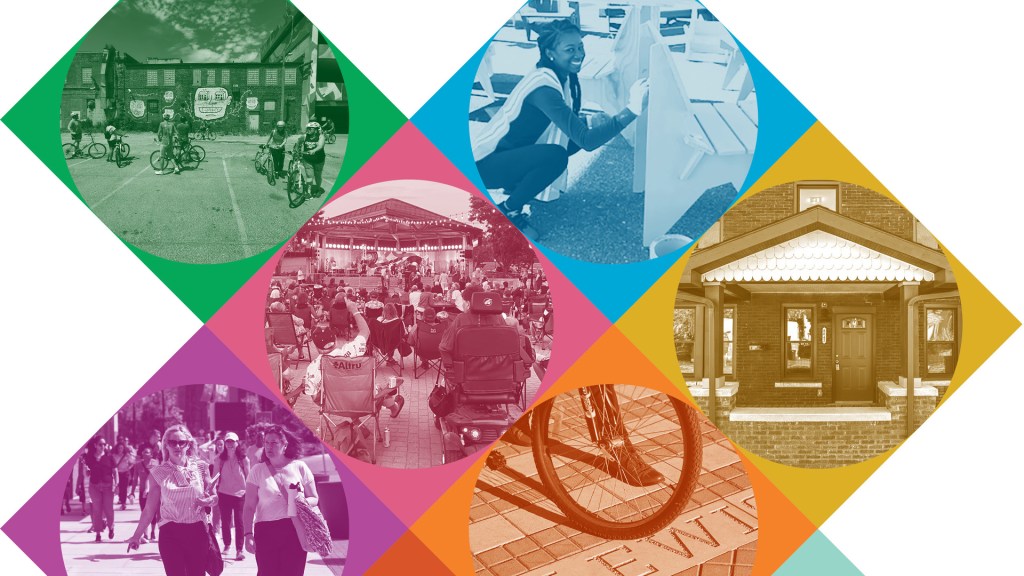
The Roles of Local News, Personal Networks and Social Media in Local Political Engagement
This article is the second article in a three-part series. Read the first article here and the third article here.
Americans have more confidence in local news outlets to fulfill various civic duties in their community than in their neighbors, social media, or community apps and organizations to do so. Yet when it comes to active engagement in their community, citizens turn more often to in-person and digital social networks than to local journalism to spread the word about opportunities for participation. These findings are from a Gallup/Knight Foundation survey of 4,221 U.S. adults who are members of Gallup’s probability-based national panel, fielded Nov. 23-Dec. 3, 2021.
In general, Americans report being encouraged by local news but discouraged by national news and social media to participate in their community or local politics.
Overall, about half of Americans (44% to 56%) say information from news and social media has neither an encouraging nor discouraging effect on their interest in participating in their community or local politics. However, the rest are more likely to report being encouraged to participate by local news than by national news or the internet and social media. Local news leans toward having an overall positive (encouraging) impact on Americans’ participation, while national news and the internet and social media lean toward having a discouraging impact. In fact, reading, watching or listening to national news appears to make Americans feel more discouraged than encouraged about engaging in local politics by 19 percentage points.
There is some variation in the impact of local news, the internet and social media, and national news on political participation depending on political party affiliation. Social media and national news appear to have a particularly strong discouraging rather than encouraging impact on Republicans (the internet and social media by 19 percentage points, and national news by 36 points). The same is true for independents.
When it comes to consuming local news, Republicans are again slightly more discouraged than encouraged by it to participate in their community or local politics. Democrats, in contrast, report being more encouraged than discouraged to participate in their community or local politics after consuming local news (by 22 points).
Many Americans do not participate directly in politics, but some local news consumers are more engaged than others.
Four in 10 Americans say they have participated in a politically focused online or in-person group or event (like a town hall, rally, protest or social media group), while a majority (59%) say they have not. Furthermore, the findings show that:
- 48% of Democrats have participated, compared with 33% of Republicans and 36% of independents.
- Roughly the same percentages of racial/ethnic groups (ranging from 36% to 49%) and gender identities (40% each) have participated.
- 49% of adults aged 18 to 34 have participated, compared with 40% of those aged 35 to 54 and 33% of those aged 55 and older.
- 52% of those with a college degree have participated, compared with 31% of those without a degree.
- Those living in a large city (45%) or a suburb (43%) are more likely to have participated than those living in a small town (38%) or a rural community (30%).
Self-reported participation is also slightly higher among certain local news consumers. Nearly half of those who turn most often to local newspapers (48%) or local news radio (46%) for local news say they have participated in politically focused online or in-person groups or events. However, adults who get most of their local news from broadcast television are the least likely to report having participated (34%).
Americans look to in-person and digital social networks to hear about political participation opportunities and to spread the word about issues in their community.
Among those who haveparticipated in a politically focused online or in-person group or event (40%), social media is cited as the top information source from which they first heard about the group or event (34%). They also report local word of mouth (20%) more often than local news (8%) as where they first heard about the opportunity to get involved.
This result contrasts with the previously mentioned finding that local news has a more encouraging effect than the internet and social media on getting Americans involved in their community or local politics. However, it’s possible that while tuning in to local news generally makes Americans feel more connected to their community and encouraged to participate, it’s network-based sources like social media and talking to friends, family or neighbors that provide the specific information citizens need to transition from just thinking about getting involved to actually participating in a political group or event.
When asked how they raised further awareness about the political issue or event they had participated in, the most-cited method is contacting friends and family (76%), followed by neighbors or fellow community members (60%). More than a third say they reached out to local politicians (35%), about three in 10 turned to leaders of local organizations (31%), and 18% contacted national politicians. Contacting local journalists (15%) and national journalists (6%) to raise awareness are the least-cited methods. Along those lines, politically active Americans report attempting to raise further awareness about their issue mostly through in-person activities (52%) and social media (48%), followed by email (36%) and by phone (27%). Smaller numbers reported using a comment feature on a news site (18%), sending mail (15%) or using community apps (13%).
Women who have participated in a political group or event are more likely than men who have participated to have heard via social media about that opportunity to get involved and raise further awareness about the issue.[1] Forty percent of politically engaged women first heard about the opportunity to get involved through social media, compared with 28% of men. In addition, 54% of these women used social media to raise awareness about the group or event, compared with 41% of men. These findings are well-contextualized by the fact that overall, women are much more frequent users than men of a variety of interactive social media such as Facebook, Instagram and TikTok. Although men are slightly more likely than women to use Twitter, they are most likely to use more static social media such as YouTube.
The 59% of Americans who have not participated in a political group or event report a similar inclination toward social networks. When asked to consider hypothetically whom they would turn to in order to raise awareness about an issue or problem in their local area, they report neighbors or community members and friends and family most frequently, and even contacting local organizations or politicians more than local journalists. Those who have not participated also say they would hypothetically be most likely to use social media (30%) to raise awareness about an issue or problem, followed by in-person activities (21%), email (20%) and community apps (10%).
Local journalism is keeping Americans informed but falling short in facilitating political action.
Overall, when asked if they have ever engaged in various political activities in order to raise awareness about a political cause or issue they care about, most Americans report having voted in a local election (89%); created, shared or signed a petition (68%); or donated money to a local cause (54%). By contrast, only 10% of Americans report having contacted a local journalist, TV station or newspaper to raise awareness.
The findings thus far show that, for most Americans, local news beats out other sources of information in educating the public, holding leaders accountable and amplifying positive local stories or solutions to problems. But when it comes to Americans hearing about opportunities to get directly involved in local political groups or events and raising awareness about local issues they care about, most people turn first to their own in-person and digital social networks — i.e., neighbors, friends, family and social media — before local journalists. These findings hold true even among those who have never participated in politics: When asked how they would hypothetically raise awareness, these citizens also rate neighbors, friends and family, and leaders of local organizations ahead of local news as whom they would be most likely to turn to. The data suggest that at a high level, local news plays a positive role in encouraging community engagement. But when it comes to the transition from feeling encouraged to actual local political participation, communication via personal networks may be the main conduit for action.
The third and final publication of this series presents an even deeper analysis of how political activities related to different issues or topics — such as local politics, racial justice or women’s rights — vary in the use of communication tools and contact with local journalism.
[1] See additional research on how women and minority-position or identity groups create private spaces online for political discussion and engagement:
Van Duyn, E. (2018). Hidden democracy: Political dissent in rural America. Journal of Communication, 68(5). https://doi.org/10.1093/joc/jqy042
Van Duyn, E. (2020). Mainstream marginalization: Secret political organizing through social media. Social Media + Society, 6(4). https://doi.org/10.1177/2056305120981044
Recent Content
-
Artsarticle ·
-
Learning and Impactarticle ·
-
Learning and Impactarticle ·

